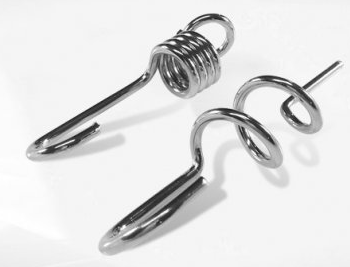A branded online store
under Lanqiaoying Technology
hotline
135-1094-6032
The corrosion of the spring can be divided into chemical corrosion and electrochemical corrosion according to the type of reaction.
They are the result of the change of the metal atoms on the surface of the spring or the gains and losses of electrons into ionic states. If the metal on the surface of the spring only reacts chemically with the surrounding medium, the corrosion caused by the spring is called chemical corrosion. For example, the spring oxidizes in a particularly dry atmosphere to form an oxide film, and the spring chemically changes with the liquid or the impurities in the liquid in the non-electrolyte liquid, etc., which belong to chemical corrosion.

If the spring is in contact with the electrolyte solution, the corrosion caused by the action of the micro battery is called electrochemical corrosion. For example, the spring is in contact with acidic or salt solutions. These solutions are all electrolytes. Due to defects or impurities on the surface of the spring, electrodes with different potential differences are formed, so that the spring is constantly subject to electrolytic corrosion.
The chemical corrosion of the spring is small and slow, while the electrochemical corrosion is the main and common. But generally speaking, chemical corrosion and electrochemical corrosion exist at the same time. During the process of manufacturing, storage, and use, springs are often subject to corrosion from surrounding media. Since the spring works by elastic force, the elastic force will change and lose its function after the spring is corroded.
Therefore, preventing the corrosion of the spring can ensure the stable operation of the spring and prolong its service life. The anti-corrosion method of the spring generally adopts a protective layer, which can be divided into: metal protective layer, chemical protective layer, non-metal protective layer and temporary protective layer according to the nature of the protective layer.